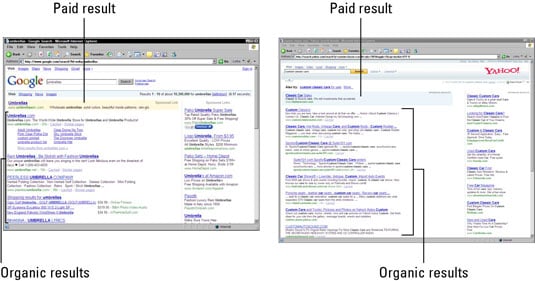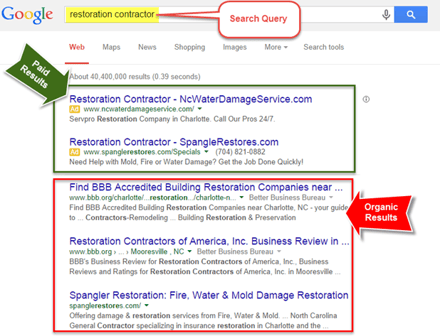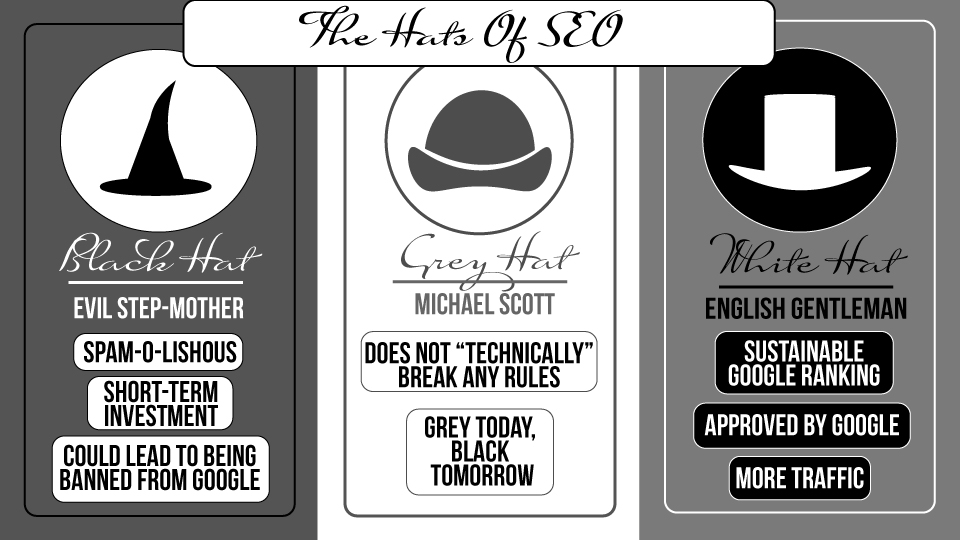Introduction to SEO

Search Engine Optimization or in a shorter term, SEO, is a method to increase the quality and quantity of your website traffic through organic search results in search engines. Along with that, this will also increase the audience engagement on your web-page.
Search engines are web-based tools that allow users to discover information on the World Wide Web. Popular search engine platforms are like Google, Yahoo, Bing, etc.
You may probably have heard or glanced through this term before, but not many marketers could grasp the ideas of SEO due to its complexities and broad functionalities that it holds.
Let’s take a look at the basic knowledge of SEO deeper.
Basic Knowledge of SEO
To fully understand what goes into SEO, we have broken down the basic definition of it into parts:
Quality of traffic: The term ‘quality‘ here means you’re not only trying to attract the audience to your website, but you’re also trying to get them genuinely interested in the products and services that you offer.
Quantity of traffic: ‘Quantity‘ here refers to the amount of engagement your web page is receiving when you have the right target audience clicking through the search engine results pages (SERPs).
Organic results: When you search for something in Google, it gives you two types of search results – paid and organic.
In this case, organic results refer to Web page search results that nearly match your search query based on relevance. Also known as “natural” search results, getting high ranking in organic results is what SEO all about. Take a look at the figure below for your guidance.

Meanwhile, paid results mean that you, as website owners, have your web pages paid to display for certain keywords on the search engine results pages. So, the search listings will show up when your target audience runs a search query containing those keywords.
You can easily differentiate between paid and organic results based on their positionings in the search engine page results. Take a look at the figure below for your clarification on the differentiating paid results and organic results.

The Importance of SEO

In today’s era of modern business digitalization, SEO marketing is essential for companies that want to get noticed on the search engine platforms as this has become an important factor in today’s business promotion.
As of 2017, around 46.8% of the world’s population accessed the Internet and the number of Internet users has been increasing ever since.
According to the Internet Live Stats, almost 40,000 search queries are processed by Google per second on average. This translates to an average of 3.5 billion searches are made daily along with 1.2 trillion searches per year worldwide.
This means that search engines like Google serve millions of users per day hoping to find answers to their questions or solutions to their problems.
Let’s say you have an online shopping website or blog, SEO will be able to help your business expand largely to new markets and achieve your business goals.
Listed below are the importance of SEO that you may not realize and how does it influence your business presence. Thus, search engine optimization is important because:
- Most of the Internet users are more likely to pick the top 3 to 5 search suggestions on the search engine results pages. Thus, you should take advantage of this to attract your target audience to your website.
- The ability of SEO does not only limit to increase your website ranking but good practices of SEO will allow your target audience to have a good digital experience including your web page functionalities.
- Being ranked in the top positions of search results pages for the keywords that your audience is searching for will promote good user’s trust within the website.
- It’s a good tool for social marketing of your website. When your website is searchable on Google or Yahoo, your target audience is more likely to ‘sell’ it on social media platforms like Facebook, Twitter, Instagram, etc.
- It is crucial to make sure the running process of your website goes smoothly. If more than one author coordinates your website, you can benefit from SEO in both direct and indirect ways.
- The direct benefit of SEO is that it boosts the search engine traffic while its indirect benefit is allowing you to have a common framework to use before posting any content on your website.
- Increases your website’s competitiveness. Say if there’s a website selling identical products and services like yours, your search engine optimized website will have a higher chance to attract more customers and therefore, increases your sales.
So, would you ignore these benefits of SEO to commercialize your business digitally? I bet you wouldn’t!
Now that you have known most of the basic knowledge of SEO, let’s move on to what are their approaches that you need to know.
The Approaches to SEO
There are 3 main approaches that you can implement to execute SEO for improving your website’s ranking in the search engine platforms.
These approaches are Black Hat, White Hat & Grey Hat. The main differences between these approaches are the time taken to see the results, the costs, and risks involved as well as the values it produced.

The details of these different approaches are summarized below for your clarification.
1. White Hat SEO
White Hat SEO is referring to SEO practices that are parallel to most search engines’ terms and conditions and this includes Google. This approach is basically the opposite of Black Hat SEO.
In general, White Hat SEO specifies the methods that can improve your search rankings on the search engine results page (SERP) that are within the right search engine guidelines while protecting your website’s integrity.
Using this approach, it will reduce the likeliness to get your website negatively affected by search engine algorithm updates that are consistently done 500-600 times yearly.
Recognizing the Techniques and Examples of White Hat SEO
There are some White Hat SEO techniques that you have to know when applying this approach. They are:
- High-quality content development
- Restructuring and optimization of website HTML
- Link acquisition campaigns that are backed by high-quality content
- Manual research and outreach
In addition, the main examples of White Hat SEO are:
- Delivering high-quality content and services
- A user-friendly site and has a highly-responsive loading process
- Applying detailed meta tags
- Making your site mobile-friendly
However, though the results of using this approach may take a longer time as you are not using any cheat and shortcut for your site, the White Hat SEO approach will give your site a lasting growth in rankings.
For more information on White Hat SEO, you can check out this article about How to Rank Without Breaking the Rules Using White Hat SEO.
On the contrary, Black Hat Seo opposes differently compared to White Hat SEO. Let’s take a look at the explanation below on understanding the Black Hat SEO.
2. Black Hat SEO
Black Hat SEO refers to the method of applying SEO practices that do not comply with search engine guidelines and therefore, creates dangerous risks that may result in your website to be banned from search results.
In simpler words, Black Hat SEO is a practice that contradicts to White Hat SEO, by using ways that are not allowed by search engines, such as cheating or breaking the scatter machine.
A list of tactics and strategies that are mostly used by Black Hat practitioners in Black Hat SEO have been clearly indicated on Google’s Webmaster Guidelines and Bing’s Webmaster Guidelines.
Identifying the Black Hat SEO Tactics
Listed below are the Black Hat SEO techniques that you need to know and avoid practicing when planning your organic search strategies:
- Keyword Stuffing
- Cloaking
- Link spamming
- Hidden texts and links
- Comment spamming on other people’s websites
- Link manipulation
- Automated queries on Google search
- Creating pages or domains with duplicated content
For a more extensive list, you can see 44 Black Hat SEO Techniques That Will Tank Your Site.
Why Should You Avoid Black Hat SEO
As mentioned earlier, using Black Hat SEO can get your website banned and restricted from Google or other search engine platforms.
Getting caught in using Black Hat SEO techniques nowadays are not easily avoidable. This is because the existing search engines have become more advanced than ever and one of them is detecting the Black Hat techniques applied by its users.
While this technique may give you faster results and temporary success, over time there will be devastating penalties by search engines if Black Hat practices are detected on your rankings and traffic.
The infographic below illustrates the differences between White Hat SEO vs Black Hat SEO that you should know before implementing the right SEO method for your site.

3. Grey Hat SEO
While there is White Hat SEO and Black Hat SEO, there is another approach that lies in between these 2 approaches called Grey Hat SEO.
The practices in Grey Hat SEO are riskier than White Hat SEO, but it may or may not result in getting your site banned from search engines.
However, it is important to have a clear understanding of this approach. This is because they are slightly unethical and the tactics are not normally outlined in the webmaster guidelines. Also, its terms of service are a bit vague.
Techniques of Grey Hat SEO:
Some of the Grey Hat techniques that you should know are:
- Cloaking
- Purchasing old domains
- Duplicating content
- Fake reviews
- Social media automation
Let’s take a look at each of these techniques carefully.
1. Cloaking
Cloaking is a technique of showing users a different result than it does the search engine. In simpler words, it is a form of 2 different pages of the same URL. It is considered to be a risky method for Google as it violates its rules.
Try to watch the video below by Matt Cutt for a clearer understanding of cloaking in practicing SEO.
It is mentioned in the video that cloaking is not a method that is approved by Google. This is because cloaking can be done through changing meta information so that it doesn’t plagiarise the original content and alter the IP address of the site.
2. Purchasing Old Domains
This method describes the purchasing of an old website that has been abandoned or the owner itself is inactive for a long time.
You can purchase the old domains as a method to create backlinks in order to increase your search rankings by using the domains with high authority, domain age, etc.
However, this method may be a bit risky as Google may detect this action and decide it doesn’t count.
Either way, it is not costly to achieve the SEO advantage. The figure below shows the screenshot from a video about buying expired domains that Brian Dean from Backlinko did for Quicksprout.

For more information on buying old domains, you can check out this article here by Neil Patel as he explained clearly on the steps to purchase the domains available.
3. Duplicating Content
Content duplication will not increase your rank on search engine results pages (SERP). This is because Google or any other search engines can easily detect the copied or dummy content on your website.
If you want to keep the duplicated content on your webpage, you can go for a canonical attribute on URLs. This attribute will notify Google that the content on your site has been duplicated. Hence, your website ranking will be the same.
You can also use plagiarism tools to produce high-quality content. Besides, content with zero plagiarism will lead to a high ranking in SERPs.
4. Fake Reviews
It is recommended by Google to not use this technique. The reason is that using reviews from fake accounts are easily detected by Google by using an IP address or cookies.
5. Social Media Profile Automation and Buying Followers
In social media profile automation, it allows you to create auto social media posts by using specific tools that will help you save time when managing multiple accounts.
Buying followers may seem like a quick idea to increase your page ranking.
However, little did you know that this method means there is no social engagement and possible risks to get your true followers affected by dangerous viruses and malware.
This is closely considered as Black Hat social media techniques because you’re basically using ‘shortcuts’ to make your social accounts look amazing than it actually is. You can check out the article here on the Black Hat Social Media Techniques that Your Brand Shouldn’t Use for more information.
Summary
Now the approaches of SEO have been outlined, it is important to know that these approaches distinguish differently. This is summarised in the figure below which shows a visual comparison of the different approaches of SEO.

Though SEO changes over time and its rules are often ill-defined, it is clearly evident that you should not use Black Hat and Grey Hat techniques as it incorporates high risks and may result in dangerous consequences for your site.
Moving on to the next section, there are 2 basic types of SEO that you should acknowledge. They are known as On-Page SEO and Off-Page SEO. Let’s take a look at its details below.
2 Basic Types of SEO
1. On-Page SEO
On-page SEO emphasizes on your website and its content. The purpose of using On-page SEO is to allow the search engines and your target audience can easily find, use and understand your page content.
Additionally, On-page SEO mainly helps Google and your website visitors determine whether your content is significantly relevant and potentially useful. This is outlined in the On-page SEO checklist in order to maximize the individual content of your website.
This type of SEO consists of:
- Keyword Research: Searching for the best keywords that you plan to target on the page of your content.
- Content creation: Writing high-quality content based on the focused keywords
- Keyword optimization: Using the focused keyword efficiently and good meta tag SEO.
Some essential elements of On-page SEO that you need to know beforehand are title tags, meta tags, meta descriptions, headings, content writing, images, URLs, internal and external links.
Let’s see the breaking down of these elements below.
Breaking Down Elements of On-Page SEO
1. Title tags
This element is an HTML element that describes the title of your web page.
It is shown on search engine results pages (SERPs) as a clickable headline for your users on the given result.
Also, it is important to define usability, SEO and social sharing. The title tags of your web page should be specific and straightforward.
Read through this article for a more detailed explanation of title tags.
2. Meta tags
The Meta tags are an element that refers to the beginning of most SEO practices and they are known for the best tools in a search marketer’s repertoire.
The list below shows the required meta tags that you should be on every page:
- Meta content type
This tag is important to notify your character set for your page and should be visible on every page.
- Title
Though the title doesn’t begin with “meta”, it is in the header section and consists of information that’s crucial for SEO.
It is important for you to have a unique title on every page as it defines them. Check out this article for more information on title tags.
- Meta description
The meta description tag briefly describes the page to your audience as they read through on SERPs (Search Engine Results Pages).
It may not influence your page ranking, but it’s important nonetheless. It’s the ad copy that will define if your audience clicks on your search result.
You can read through its explanation in the next point below or click through this article here on meta descriptions that go into more detail.
- Viewport
In this era of mobile web where everything is now accessible through your handheld devices especially your smartphone, you should be emphasizing on the viewport.
Disregarding this element will run the risk of having a poor mobile experience for your users.
You can refer to the Google PageSpeed Insights Tool that will enlighten you more about viewport.
For more information on meta tags, check out this article on The Ultimate Guide to SEO Meta Tags.
3. Meta descriptions
The meta description refers to the HTML attribute that gives you a brief summary of your webpage.
This is usually displayed up to 160 characters on the search results where it can greatly attract your audience click-through rates.
Take a look at the example of meta description below:

You can refer to this article here for a more detailed explanation of Meta Description Tag.
4. Headings

In this element, it acts as a ‘signposts’ for your readers and the search engines to know what’s the page is about.
It also entails which parts of your content are important and show how they are interlinked.
Check out this post on the details about How To Use Headings on Your Site.
5. Content writing

Content is the ultimate element of any website. This is because content basically runs the site and having a well-published content attracts your audience to your website.
Also, this will keep them satisfied with the sufficient amount of information posted and therefore, influence them to share and spread the word.
There are no particular rules on how to do content writing, but it definitely needs to be well-executed and understandable.
Listed below are some tips on how to deliver great content for your site:
- First and foremost, avoid using ads
- Place your targeted keywords at the beginning of your content
- Add at least one image to create a friendly content
- USe a table of contents at the beginning of your content and link to sub-headlines
- Don’t mind about keyword density
- Use short paragraphs to ease the reading process for your audience
- Write at least several hundreds of words
For more tips and tricks on content writing, check out this article on On-Page Search Engine Optimization Guide
6. Images
Images are known to be important elements in search ranking. Though they can be found in image search, they also contribute to regular SEO as well.
Search engines like Google can also interpret texts within images. However, it is not advisable to have hidden crawlable keywords inside these images.
There are some requirements that you need to meet when doing image optimization for your site:
- Use the right image resolution
- Make sure to use clear, high-quality images
- Only use lowercase characters for naming image filename
- Provide an ALT attribute
- Provide a TITTLE attribute
- Ensure that the image size is as small as possible (allocate GIFs, JPG and PNG images appropriately).
- The image filename should be closely matched to the URL suffix
- Place dashes (-) to separate keywords inside image filename
You can read through this article about 14 Important Image SEO Tips You Need to Know for more information on image optimization for your site.
7. URLs
The URL (Uniform Resource Locator) element is usually known as the “website address” which specifies the location of your webpage on the Internet.
It also indicates how to look into that resource which also known as the “protocol’. For example, HTTP, HTTPS, FTP, etc.
To learn more about URLs, you can refer to this article here.
8. Internal and external links
- Internal Links
Internal links are known as hyperlinks that lead from one page of a domain to a different page of the same domain.
They are usually on the main navigation page. Besides, internal links are helpful for 3 main reasons:
- They provide navigation for users on your website
- They create information hierarchy for your website
- They help spread the link equity (ranking power) among other websites.
This article here will explain the latest SEO best practices in creating internal links for an SEO friendly-site building.
- External Links
External links are hyperlinks that lead to (target) an external domain. In layman’s terms, if another website links to you, this considers as an external link to your site and vice versa.
This is further defined in the following details:
- Top SEO experts believe that external links are considered to be the most vital element in the ranking power.
- External links deliver ranking power variously compared to internal links as they are considered to be third-party votes by the search engines.
- SEO experts believe otherwise that the ‘title’ link is used for ranking purposes.
For more information, you can look into the article here about the essential components of External Links in SEO.
2. Off-Page SEO
As for Off-page SEO, it is meant to enhance the influence and strengthen the relationship of your website between other websites. This includes strategies in order to build and maintain your website’s image reputation and authority.
Most Off-page SEO usually refers to high-quality backlinks. This relates to a large set of links connecting your site from trustworthy, relevant and authoritative sites that show your site is valuable and conclusively proved.
In other words, Off-page SEO becomes a center for external ranking signals like backlinks and online (unlinked) mentions of your websites/business.
Let’s say your content is relevant to the search queries, Off-page SEO usually helps Google determine to place it in the search results page.
Refer to the figure below, it will show you a clear illustration of the On-page and Off-page SEO landscape for your site.

The examples of Off-page SEO include:
- An incoming hyperlink from an external website /an unlinked mention of your company/ website on social media
- A website forum
- A question and answer site
- An online directory or,
- Any other external website
Conclusion
This article has outlined the types of SEO, the approaches of SEO, the 2 basic types of SEO as well as the basic knowledge of SEO.
We hope that you have learned the essential elements of Search Engine Optimization (SEO) and able to plan a winning SEO strategy to increase your website ranking on the search engines.
Let us know your thoughts in the comments below.

Recent Comments